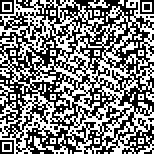| 本文已被:浏览 456次 下载 386次 |

码上扫一扫! |
|
|
| 基于中医证素探析天津地区COVID-19患者伴发抑郁及焦虑状态的危险因素 |
|
刘旻1,2, 王睦天1,2,3, 赵启亮1,2, 张东4, 范爽4, 张慧琪1,2
|
|
1.天津中医药大学第一附属医院, 天津 300193;2.国家中医针灸临床医学研究中心, 天津 300193;3.天津中医药大学, 天津 301617;4.天津市海河医院, 天津 300350
|
|
| 摘要: |
| [目的] 探析天津地区新型冠状病毒感染(COVID-19)患者中医证素分布对伴发焦虑/抑郁状态的影响。[方法] 收集2020年1月至2020年7月天津市海河医院收治的COVID-19本土确诊病例176例,采集入院时临床资料,进行心理问卷(GAD7、PHQ9)调查,计算中医证素,采用Logistic回归分析中医证素对伴发焦虑/抑郁状态的影响。[结果] 纳入COVID-19患者176例,伴发抑郁状态者102例,伴发焦虑状态者112例,伴发抑郁合并焦虑状态者99例,计算得出中医证素20种(病位证素9种,病性证素11种),单因素分析显示,病位在脾、肝,病性为气滞,伴发抑郁状态比例高;病位在脾、肝,病性为热、痰、气滞、食积、寒,伴发焦虑状态比例高;Logistic多因素回归分析示,病位在肝(OR=10.346)和病性为气滞(OR=1.152)是伴发抑郁状态的危险因素;病位在脾(OR=3.380)、病位在肝(OR=9.791)、病性为热(OR=4.358)是伴发焦虑状态人群的危险因素;病位在脾(OR=2.259)、病位在肝(OR=12.057)、病性为气滞(OR=2.731)是伴发抑郁合并焦虑状态人群的危险因素。[结论] 天津地区COVID-19患者中,病位在肝或病性为气滞增加其伴发抑郁状态的风险,病位在肝、脾或病性为热增加其伴发焦虑状态的风险,病位在肝、脾或病性为气滞增加其伴发抑郁合并焦虑状态的风险。 |
| 关键词: 新型冠状病毒感染 中医证素 广泛性焦虑 抑郁 危险因素 |
| DOI:10.11656/j.issn.1672-1519.2023.09.01 |
| 分类号:R563.1 |
| 基金项目:天津市中医药重点领域科技项目(2021010)。 |
|
| Analysis of the risk factors of depression and anxiety in COVID-19 patients in Tianjin based on traditional Chinese medicine syndrome elements |
|
LIU Min1,2, WANG Mutian1,2,3, ZHAO Qiliang1,2, ZHANG Dong4, FAN Shuang4, ZHANG Huiqi1,2
|
|
1.First Teaching Hospital of Tianjin University of Traditional Chinese Medicine, Tianjin 300193, China;2.National Clinical Research Center for Chinese Medicine Acupuncture and Moxibustion, Tianjin 300193, China;3.Tianjin University of Traditional Chinese Medicine, Tianjin 301617, China;4.Tianjin Haihe Hospital, Tianjin 300350, China
|
| Abstract: |
| [Objective] To explore the impact of traditional Chinese medicine syndrome element distribution on concomitant anxiety/depression in corona virnus disease 2019(COVID-19) patients in Tianjin area. [Methods] The 176 locally confirmed COVID-19 cases admitted to Haihe Hospital in Tianjin from January 2020 to July 2020 were collected. Clinical data at admission were collected,and psychological questionnaires(GAD7,PHQ9) were conducted to calculate traditional Chinese medicine syndrome elements. Logistic regression analysis was used to analyze the impact of traditional Chinese medicine syndrome elements on concomitant anxiety/depression. [Results] The 176 patients with COVID-19 were included,including 102 patients with concomitant depression,112 patients with concomitant anxiety,and 99 patients with concomitant depression and anxiety. The 20 types of traditional Chinese medicine syndrome elements(9 types of disease location syndrome elements and 11 types of disease nature syndrome elements) were calculated. Univariate analysis showed that the disease was located in the spleen and liver,with a high proportion of qi stagnation and concomitant depression;the disease is located in the spleen and liver,characterized by heat,phlegm,qi stagnation and food accumulation,with a high proportion of accompanying anxiety;Logistic multiple factor regression analysis showed that the location of the disease in the liver(OR=10.346) and the nature of the disease as qi stagnation(OR=1.152) were risk factors for concomitant depression;the location of the disease in the spleen(OR=3.380),liver(OR=9.791),and fever(OR=4.358) are risk factors for individuals with anxiety state;the location of the disease in the spleen(OR=2.259),liver(OR=12.057),and qi stagnation(OR=2.731) are risk factors for individuals with depression and anxiety. [Conclusion] Among COVID-19 patients in Tianjin,the presence of liver or qi stagnation increases the risk of accompanying depression. The presence of liver or spleen or heat increases the risk of accompanying anxiety. The presence of liver or spleen or qi stagnation increases the risk of accompanying depression and anxiety. |
| Key words: COVID-19 traditional Chinese medicine syndrome element generalized anxiety depression risk factor |
